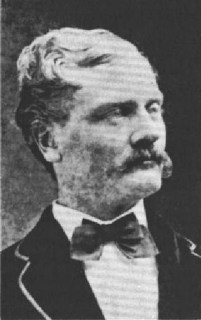Oliver Holmes was born November 2, 1777 in Kingston, Plymouth, Massachusetts; his parents were Simeon Holmes and Mercy Weston. Oliver is a direct descendant of John Alden, reportedly the first man to step off the Mayflower at Plymouth Rock (and signor of the Mayflower Compact.)
Holmes left New Bedford to trade in the Pacific and arrived in the Islands on the Margaret in 1793 and became one of the first dozen foreigners (and one of the first Americans) to live in Hawaiʻi.
Oliver Holmes lived on the island of Oʻahu. After the victory of Kamehameha on Oʻahu (1795,) Holmes married Mahi Kalanihoʻoulumokuikekai, daughter of a high chief of Koʻolau who was killed in the battle of the Nuʻuanu Pali. (Kelley)
Isaac Davis, who had been with Kamehameha since 1790, spent a good deal of time on Oʻahu after the Battle of Nuʻuanu (1795,) and as early as 1798 he was ‘supreme’ at Honolulu, handling all trade with visiting ships.
Holmes made his living managing his land holdings on Oʻahu and Molokai, providing provisions to visiting ships. (Hammatt) To supplement that, in 1809, he got involved with a distillery in Kewalo – this was the infancy of the short-lived rum distillation from the local sugar cane. (Greer)
Holmes was an assistant to the Governor of Oʻahu for a long time. (Land Commission Testimony) After Davis’ death (1810,) Holmes impressed visitors as the most important man on Oʻahu, next to the King. Holmes was addressed as Aliʻi Homo (Chief Holmes.) (Daws)
John Young, Isaac Davis, and Oliver Holmes were all governors of Oʻahu. Kamehameha’s advisors told him not to appoint an important chief over Oʻahu in the king’s absence, for he might rebel against him.
Davis served as governor of Oʻahu from 1795 to 1810; following Davies’ death, when Kamehameha was on Hawaiʻi, Holmes was in charge of foreign trade at Oʻahu; when the king was on Oʻahu, Young would manage affairs on Hawaiʻi. (Klieger)
“At the time Kamehameha I went back to Hawaiʻi (1812) he appointed (Oliver Holmes) to arrange settlements of disputes (hoʻonoho e hoʻoponopono i na mea hihia); (Holmes) built a house and made a wall at this vacant place and lived there. … it (was) fenced, having 6 houses on it”. (Land Commission Testimony)
The former Holmes Honolulu property was on a site on the mauka side of King Street, midway between Fort and Nuʻuanu Streets (Bethel Street now cuts right through the former Holmes property.) He had acquired it in about 1811 from Kamehameha I for consideration of services and friendship.
Holmes, among other foreigners, asked the Protestant missionaries to help educate their children; “… we were encouraged in our efforts to commence a school by several residents, some wishing their wives, and others their children to be instructed.”
“Among these, were Messrs. Holmes and Navarro (American), Marin (Spanish), Harbottle, Woodland and Beckley (English) and Allen, a refugee from New York slavery before its abolition…” (Bingham)
Holmes and Mahi had six surviving children: Hannah, George, Polly (Sarah Pauline,) Charlotte, Mary and Jane (another, Benjamin, died in infancy.)
Hannah first married William Heath Davis (Sr;) their son, William Heath “Kanaka” Davis, Jr (1822 – 1909,) was a merchant and trader, and was one of the founders of “New Town” San Diego in 1850. Hannah later married John Coffin Jones Jr – Jones was the first US Agent for Commerce and Seamen and the first official US representative in the Hawaiian Islands.
Click HERE for a prior post on William Heath Davis Jr.
It appears that Polly had a few husbands: Capt. Isaiah Lewis, Samuel F Mills, Washington Crocker and George Colman – and several children. Charlotte married Charles Hammett (Hammatt.) Mary married English fur trader Captain John Bancroft.
Another of Oliver Holmes’ daughters, Jane, married Nathan Spear; Boston-born Spear came to Monterey in 1831 and became one of California’s pioneer merchants. Five years later he opened the first store in the new village of Yerba Buena (now known as San Francisco.)
Holmes died August 6, 1825 at his property on King Street. The image shows the location of the Oliver Holmes property in downtown Honolulu.
Follow Peter T Young on Facebook
Follow Peter T Young on Google+
Follow Peter T Young on LinkedIn
Follow Peter T Young on Blogger
































